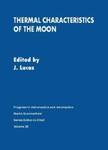版权所有:内蒙古大学图书馆 技术提供:维普资讯• 智图
内蒙古自治区呼和浩特市赛罕区大学西街235号 邮编: 010021

丛 书 名:Progress in Astronautics and Aeronautics
版本说明:1
I S B N:(纸本) 9780262120586
出 版 社:American Institute of Aeronautics and Astronautics
出 版 年:1972年
页 数:355页
主 题 词:Absorption Spectroscopy Aeronautics Aerospace Sciences Aircraft Engines Apollo Program Asteroids Astronomical Events Astronomical Observatory Astronomy Atmospheric Science Climatology Combustion Chambers Computational Fluid Dynamics Cooling Technology Electric Heating Electrical Properties Finite Difference Method Fluid Dynamics Gas Laws Heat Conduction Heat Transfer Heating System Heating, Ventilating, and Air Conditioning Jet Engines Lunar Science Material Properties Materials and Structural Mechanics Meteoroids NASA NASA Facilities NASA Programs Nebulae Optical Properties Planetary Atmospheres Planetary Science and Exploration Planets Propulsion and Power Radiative Heat Transfer Radiative Heating Radio Astronomy Rocket Engine Rocketry Solar Physics Solar System Moons Solar Wind Space Agencies Space Exploration and Technology Space Science and Technology Spectroscopy Surface Properties Telescopes Thermal Control and Protection Thermal Measurement Thermal Modeling and Analysis Thermal Radiation Thermocouples Thermodynamic Diagrams Thermodynamic Process Thermodynamic Properties Thermodynamics Thermometers Thermophysical Properties Thermophysics and Heat Transfer
摘 要:During the middle part of the decade of the 1960 s the United States Ranger spacecraft series produced a quantum jump in our knowledge; the later Surveyor spacecraft landings on the moon and the series of Lunar Orbiter spacecraft added larger quantum jumps. Two immediate uses for the information obtained from these spacecraft projects were to increase our scientific knowledge and to generate engineering information for utilization in spacecraft design and in operational planning of subsequent missions. The 1969-1971 Apollo flights resulted in still greater contributions to lunar knowledge, and these recently reached a peak with the very promising Apollo 15 landing. The USSR space effort also has produced major contributions to lunar knowledge, especially from the still-continuing Luna and Zond spacecraft series and from the Lunokhod rover that was first landed in 1970. Russian contributions included the first photographs of the far side of the moon, the return of a lunar soil sample, soil analyses with the rover, and microwave measurements of the lunar surface. During these periods many techniques were employed to study the moon. Earth-based methods of observing the moon were greatly extended and refined, spacecraft-borne experiments made direct measurements on the lunar surface, and simulated and actual lunar materials were subjected to tests in terrestrial laboratories. Finally, stimulated by all of these findings, theories of the origin of the moon and of its surface features were developed. The purpose of this volume is to bring together in one place results obtained during the first decade of space exploration that bear on the thermal characteristics of the moon. The successive chapters show the way in which many pieces of information can be put together and used by different investigators from different disciplines to provide a coherent and reasonably accurate explanation of the moon s thermal characteristics. The characteristics include thermal properties of